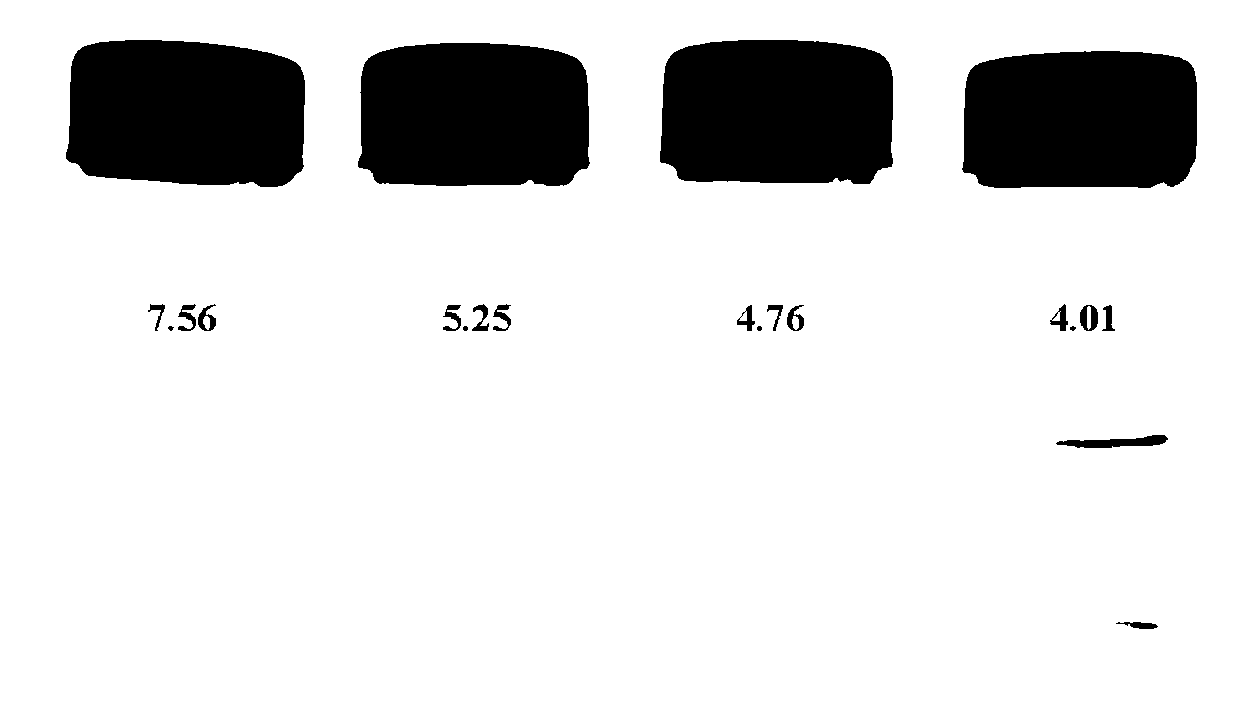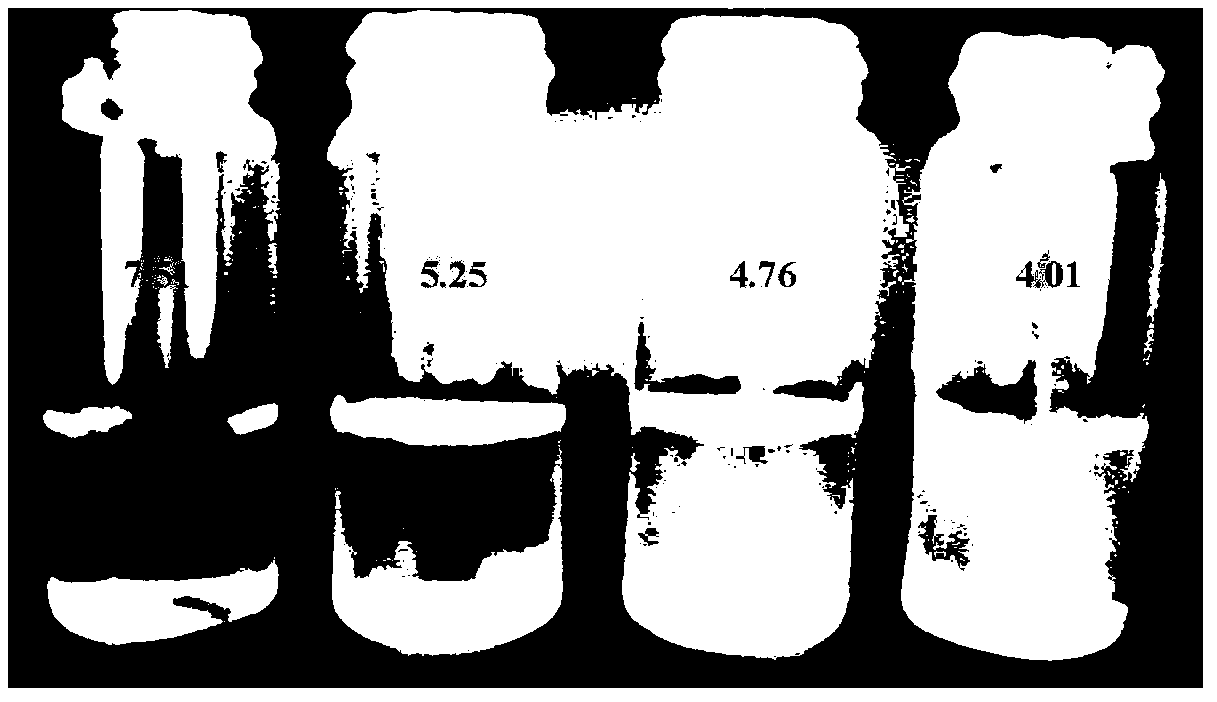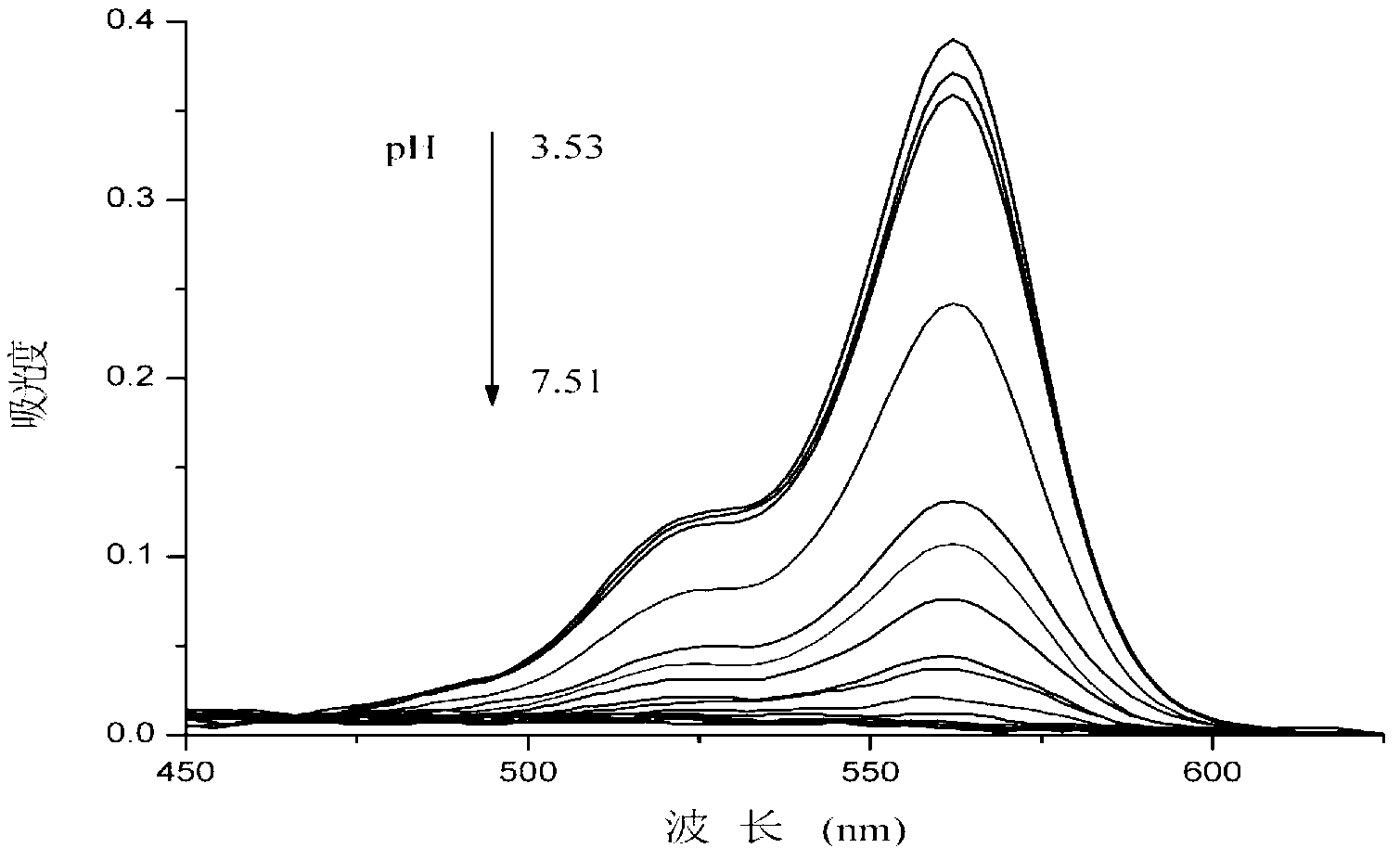Rhodamine B targeted lysosome pH fluorescent probe with cysteine ethyl ester structure and application of rhodamine B targeted lysosome pH fluorescent probe
A cystine ethyl ester, fluorescent probe technology, used in pH fluorescent probes and application fields, can solve the problems of affecting monitoring results and increasing lysosome pH, and achieve rapid response, good reversibility, high sensitivity and high sensitivity. selective effect
- Summary
- Abstract
- Description
- Claims
- Application Information
AI Technical Summary
Problems solved by technology
Method used
Image
Examples
Embodiment 1
[0038] Synthesis of rhodamine B class-targeted lysosome pH fluorescent probe containing cysteine ethyl ester structure
[0039]
[0040] 1g (2.1mmol) Rhodamine B, 400mg (2.6mmol) POCl 3 Add 15mL of dry 1,2-dichloroethane into a 50mL reaction flask, heat to reflux, and react for 4h. After cooling, the solvent was distilled off under reduced pressure to obtain rhodamine B acid chloride, which was directly used in the next reaction.
[0041] Add 430 mg (2.3 mmol) of L-cysteine ethyl ester hydrochloride to 10 mL of dichloromethane, add 2 mL of triethylamine, stir at room temperature for 30 min, and filter to obtain a dichloromethane solution of cysteine ethyl ester. Cool in an ice bath. The crude rhodamine B acid chloride obtained above was dissolved in 10 mL of dichloromethane, dropped into the dichloromethane solution of ethyl cysteine, stirred for 4 hours under ice bath, and then reacted overnight at room temperature. Concentrate the reaction solution under reduced ...
Embodiment 2
[0047] Prepare 10mL solutions of probe RCE (10μM) at different pH values (ethanol / Britton-Robinson buffer solution, 40mM acetic acid, phosphoric acid, boric acid, 1:4, volume ratio), and perform UV-visible spectrophotometry and fluorescence spectrometry respectively. Photometric test, and draw the curve of the fluorescence intensity at 584nm as a function of the pH value.
[0048] The results show that the probe RCE has a good response to the pH value. After the pH value changes from 7.51 to 3.53, the solution changes from colorless to red and produces fluorescence. The fluorescence intensity is about 150 times stronger, which has a good fluorescence enhancement effect. Can improve signal sensitivity and accuracy ( figure 1 , 2 , 3, 4).
Embodiment 3
[0050] After adding various metal ions to the solution of probe RCE (10μM) with a pH value of 7.2 (ethanol / Britton-Robinson buffer solution, 40mM acetic acid, phosphoric acid, boric acid, 1:4, volume ratio), test its 584nm changes in fluorescence intensity. (excitation wavelength: 563nm; K + and Na + 1mM, Ca 2+ and Mg 2+ 0.1mM, 50μM for other ions)〖 Figure 5 (a)〗.
[0051] After adding various metal ions and bio-related substances to the solution of probe RCE (10μM) with a pH value of 5.4 (ethanol / Britton-Robinson buffer solution, 40mM acetic acid, phosphoric acid, boric acid, 1:4, volume ratio), Test its fluorescence intensity change at 584nm. (excitation wavelength: 563nm; K + and Na + 1mM, Ca 2+ and Mg 2+ 0.1mM, other ions 50μM, Histidine: 0.2mM, Tyrosine: 0.2mM, Arginine: 0.2mM, Glutamic acid: 0.2mM, Lysine: 0.2mM, Threonine: 0.2mM, Glycine: 0.2mM, Glucose: 1mM, H 2 o 2 : 2mM)〖 Figure 5 (b)〗.
[0052] The results show that the response of the probe RCE to t...
PUM
| Property | Measurement | Unit |
|---|---|---|
| melting point | aaaaa | aaaaa |
Abstract
Description
Claims
Application Information
 Login to View More
Login to View More - R&D
- Intellectual Property
- Life Sciences
- Materials
- Tech Scout
- Unparalleled Data Quality
- Higher Quality Content
- 60% Fewer Hallucinations
Browse by: Latest US Patents, China's latest patents, Technical Efficacy Thesaurus, Application Domain, Technology Topic, Popular Technical Reports.
© 2025 PatSnap. All rights reserved.Legal|Privacy policy|Modern Slavery Act Transparency Statement|Sitemap|About US| Contact US: help@patsnap.com



